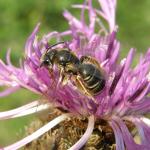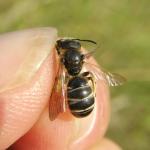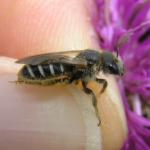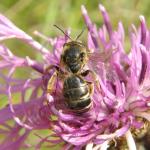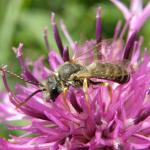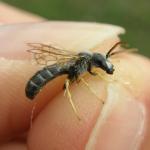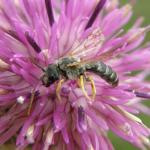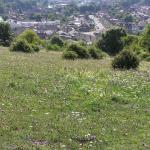Halictus compressus WALCKENAER 1802; Halictus eurygnathopsis BLÜTHGEN 1936; Apis flavipes PANZER 1798, nec FUESSLIN 1775 nec FABRICIUS 1787; Hylaeus senex FÖRSTER 1860, sensu WARNCKE 1973 (nomen oblitum); Halictus veneticus EBMER 1969 (nec MÓCZÁR 1967); Melitta quadricincta secundum KIRBY nec (FABRICIUS 1776); Hylaeus tomentosus HERRICH-SCHAEFFER 1840
Formerly recorded from East and West Kent (St. Margaret's Bay, Dover, Upper Halling) and East Sussex (Eastbourne, Falmer, Litlington, Seaford, Ovendean). There are unconfirmed reports from East Kent (Rochester (Malloch, 1904)), the Isle of Wight (Ventnor (R.C. Bradley in Wainwright, 1903)) and Dorset (Portland (J.C. Dale in F. Smith, 1848)). Unconfirmed literature records are not shown on the map. After an interval of at least fifty years, the species was rediscovered in East Sussex by S.J. Falk in 2003.
In mainland Europe the range extends from southern Sweden (Gotland) east to the Volga. In southern Europe it occurs in isolated pockets, in southern Italy and further east, from St. Petersburg to Azerbaijan (Ebmer, 1988).
The species is listed as Endangered (RDB1) in Shirt (1987) and by Falk (1991).
Most sites were chalk grassland near the coast.
Females active from early June to the beginning of September, males from early August to September.
Reported to nest in aggregations (Sladen, 1897).
Greater knapweed (Centaurea scabiosa) and common knapweed (Centaurea nigra).
None recorded.
Proofed: January 2012
Distribution updated 2019 by N.P. Jones


